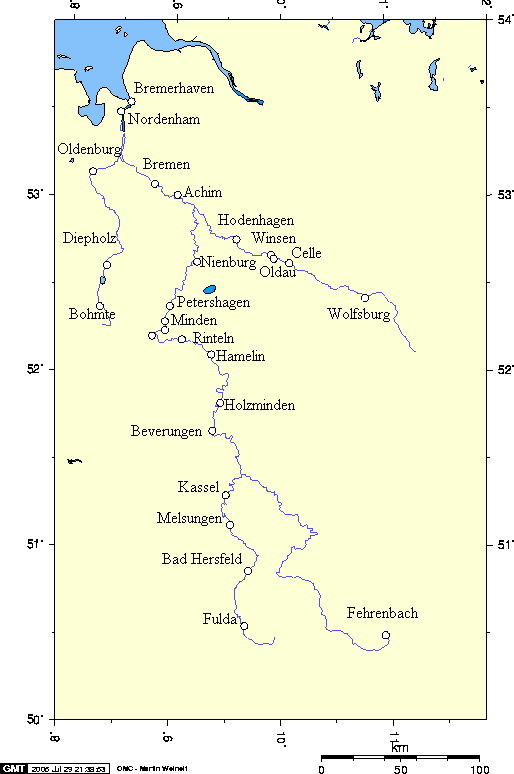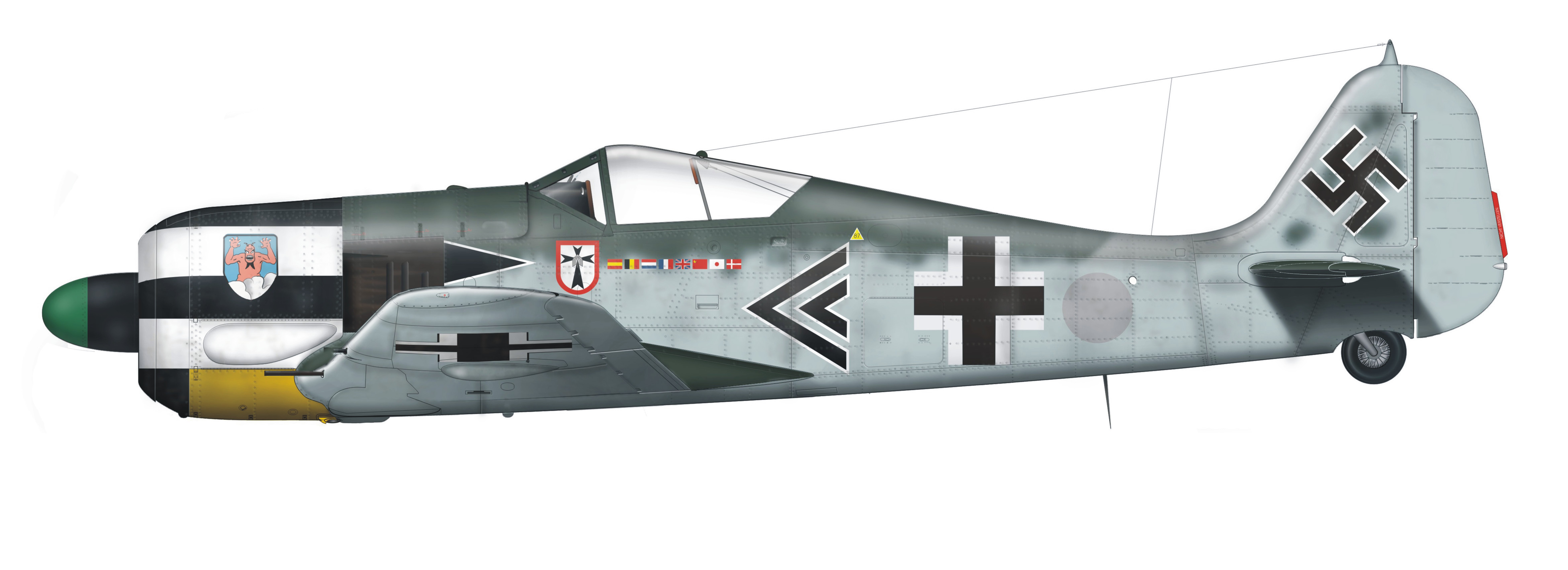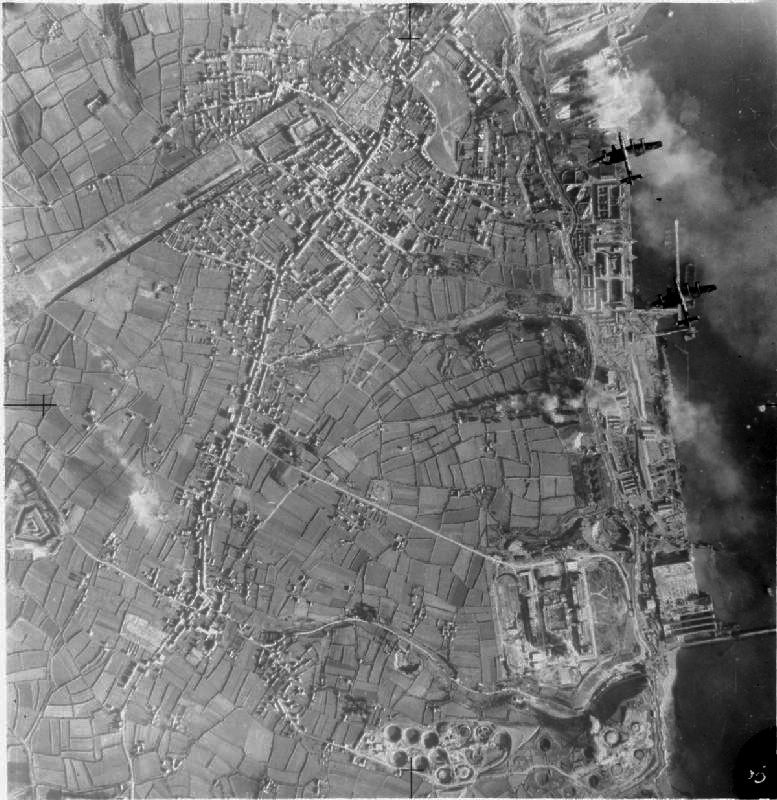|
Heinz Knoke
Heinz Knoke (24 March 1921 – 18 May 1993) was a World War II ''Luftwaffe'' flying ace. He is credited with 33 confirmed aerial victories, all claimed over the Western theatre of operations, and claimed a further 19 unconfirmed kills in over 2,000 flights. His total included 19 heavy bombers of the United States Army Air Forces (USAAF). Early life He was born the son of a policeman on 24 March 1921 in Hamelin. On 6 July 1938, whilst watching an air display, Knoke made his first flight, a fifteen-minute joy ride in an old transport aircraft and took the preliminary examination for entry into the ''Luftwaffe''. On 15 November 1939, Knoke underwent flight training at No. 11 Flying Training Regiment Schonwald, near Berlin and in August 1940 attended ''Jagdfliegerschule'' 1 (Werneuchen) under instructor Flight Sergeant Kuhl, an experienced operational pilot who had already seen action in both the invasions of Poland and France. War career 1941-42 In early 1941 Knoke received his ... [...More Info...] [...Related Items...] OR: [Wikipedia] [Google] [Baidu] |
Hamelin
Hamelin ( ; german: Hameln ) is a town on the river Weser in Lower Saxony, Germany. It is the capital of the district of Hamelin-Pyrmont and has a population of roughly 57,000. Hamelin is best known for the tale of the Pied Piper of Hamelin. History Hamelin started with a monastery, which was founded as early as 851 AD. A village grew in the neighbourhood and had become a town by the 12th century. The incident with the "Pied Piper" (see below) is said to have happened in 1284 and may be based on a true event, although somewhat different from the tale. In the 15th and 16th centuries Hamelin was a minor member of the Hanseatic League. In June 1634, during the Thirty Years' War, Lothar Dietrich, Freiherr of Bönninghausen, a General with the Imperial Army, lost the Battle of Oldendorf to the Swedish General Kniphausen, after Hamelin had been besieged by the Swedish army. The era of the town's greatest prosperity began in 1664, when Hamelin became a fortified border town of the ... [...More Info...] [...Related Items...] OR: [Wikipedia] [Google] [Baidu] |
Erich Woitke
Erich Woitke (29 January 1912 – 24 December 1944) was a fighter pilot 'ace' serving in the German Luftwaffe during World War II. Early life Woitke was born 29 January 1912 in Mülheim, near Duisburg. Military career ''Leutnant'' Woitke served with the fighter unit 1./J 88 of the Condor Legion during the Spanish Civil War. He recorded his first victory on 27 September 1937, claiming a Republican I-16 "Rata". He claimed 3 more victories, all "Ratas" before returning to Germany. From the early stages of his career until his death, Woitke was considered outspoken, and anti-authoritarian, and his attitude to authority would lead him into conflict with his superiors on numerous occasions. He is reputed to have received the German Cross in Gold from Hermann Göring in person, only to hurl the award on the floor while making disparaging remarks. World War II In February 1940, ''Oberleutnant'' Woitke was made ''Staffelkapitän'', 6./JG 3, leading the unit through the Battle of France. ... [...More Info...] [...Related Items...] OR: [Wikipedia] [Google] [Baidu] |
Consolidated B-24 Liberator
The Consolidated B-24 Liberator is an American heavy bomber, designed by Consolidated Aircraft of San Diego, California. It was known within the company as the Model 32, and some initial production aircraft were laid down as export models designated as various LB-30s, in the Land Bomber design category. At its inception, the B-24 was a modern design featuring a highly efficient shoulder-mounted, high aspect ratio Davis wing. The wing gave the Liberator a high cruise speed, long range and the ability to carry a heavy bomb load. Early RAF Liberators were the first aircraft to cross the Atlantic Ocean as a matter of routine. In comparison with its contemporaries, the B-24 was relatively difficult to fly and had poor low-speed performance; it also had a lower ceiling and was less robust than the Boeing B-17 Flying Fortress. While aircrews tended to prefer the B-17, General Staff favored the B-24 and procured it in huge numbers for a wide variety of roles. At approximately 18,5 ... [...More Info...] [...Related Items...] OR: [Wikipedia] [Google] [Baidu] |
Bristol Blenheim
The Bristol Blenheim is a British light bomber aircraft designed and built by the Bristol Aeroplane Company (Bristol) which was used extensively in the first two years of the Second World War, with examples still being used as trainers until the end of the war. Development began with the ''Type 142'', a civil airliner, in response to a challenge from Lord Rothermere to produce the fastest commercial aircraft in Europe. The ''Type 142'' first flew in April 1935, and the Air Ministry, impressed by its performance, ordered a modified design as the ''Type 142M'' for the Royal Air Force (RAF) as a bomber. Deliveries of the newly named Blenheim to RAF squadrons commenced on 10 March 1937. In service the Type 142M became the Blenheim Mk.I which would be developed into the longer Type 149, designated the Blenheim Mk.IV, except in Canada where Fairchild Canada built the Type 149 under licence as the Bolingbroke. The Type 160 Bisley was also developed from the Blenheim, but was already o ... [...More Info...] [...Related Items...] OR: [Wikipedia] [Google] [Baidu] |
Sandy Gunn
Alastair Donald Mackintosh "Sandy" Gunn (27 September 1919 – 6 April 1944), was a Scottish Supermarine Spitfire photo reconnaissance pilot who was taken prisoner during the Second World War. Gunn took part in the "Great Escape" from Stalag Luft III in March 1944, and was one of the men re-captured and subsequently executed by the ''Gestapo''. Pre-war life Gunn was born at home in Auchterarder, Perthshire, the son of surgeon James Turner Gunn, MB, ChB, FRCS and Adelaide Lucy Frances [nee Macdonald] Gunn. He was reportedly a fine athlete at school, being a member of 1st XV rugby & 1st XI cricket team. He attended Cargilfield Preparatory School and Fettes College, both in Edinburgh, and was a school prefec After leaving school, Gunn became an engineering apprentice at the Govan, Glasgow shipyard of Harland and Wolff. After a year he gained entry to Pembroke College, Cambridge to study mechanical sciences hoping for a career as a diesel engineer. Early war service Gunn enliste ... [...More Info...] [...Related Items...] OR: [Wikipedia] [Google] [Baidu] |
Supermarine Spitfire
The Supermarine Spitfire is a British single-seat fighter aircraft used by the Royal Air Force and other Allied countries before, during, and after World War II. Many variants of the Spitfire were built, from the Mk 1 to the Rolls-Royce Griffon engined Mk 24 using several wing configurations and guns. It was the only British fighter produced continuously throughout the war. The Spitfire remains popular among enthusiasts; around 70 remain airworthy, and many more are static exhibits in aviation museums throughout the world. The Spitfire was designed as a short-range, high-performance interceptor aircraft by R. J. Mitchell, chief designer at Supermarine Aviation Works, which operated as a subsidiary of Vickers-Armstrong from 1928. Mitchell developed the Spitfire's distinctive elliptical wing with innovative sunken rivets (designed by Beverley Shenstone) to have the thinnest possible cross-section, achieving a potential top speed greater than that of several contemporary figh ... [...More Info...] [...Related Items...] OR: [Wikipedia] [Google] [Baidu] |
Royal Air Force
The Royal Air Force (RAF) is the United Kingdom's air and space force. It was formed towards the end of the First World War on 1 April 1918, becoming the first independent air force in the world, by regrouping the Royal Flying Corps (RFC) and the Royal Naval Air Service (RNAS). Following the Allied victory over the Central Powers in 1918, the RAF emerged as the largest air force in the world at the time. Since its formation, the RAF has taken a significant role in British military history. In particular, it played a large part in the Second World War where it fought its most famous campaign, the Battle of Britain. The RAF's mission is to support the objectives of the British Ministry of Defence (MOD), which are to "provide the capabilities needed to ensure the security and defence of the United Kingdom and overseas territories, including against terrorism; to support the Government's foreign policy objectives particularly in promoting international peace and security". The R ... [...More Info...] [...Related Items...] OR: [Wikipedia] [Google] [Baidu] |
Fritz Losigkeit
Fritz Losigkeit (17 November 1913 – 14 January 1994) was a German Luftwaffe military aviator during the Spanish Civil War and wing commander during World War II. As a fighter ace, he is credited with 68 aerial victories in approximately 750 combat missions. This figure includes 13 aerial victories over the Western Allies, the remaining victories were claimed over the Eastern Front. In June 1943, he was given command of III. '' Gruppe'', ''Jagdgeschwader'' 51 (JG 51—51st Fighter Wing) which was fighting on the Eastern Front. In April 1944, Losigkeit was appointed ''Geschwaderkommodore'' (wing commander) of JG 51. A year later, he was appointed the last ''Geschwaderkommodore'' of ''Jagdgeschwader'' 77 (JG 77—77th Fighter Wing} and received the Knight's Cross of the Iron Cross, the highest award in the military and paramilitary forces of Nazi Germany during World War II. Early life and career Losigkeit was born on 17 November 1913 in Berlin-Tegel and j ... [...More Info...] [...Related Items...] OR: [Wikipedia] [Google] [Baidu] |
Jagdgruppe Losigkeit
Fritz Losigkeit (17 November 1913 – 14 January 1994) was a German Luftwaffe military aviator during the Spanish Civil War and wing commander during World War II. As a fighter ace, he is credited with 68 aerial victories in approximately 750 combat missions. This figure includes 13 aerial victories over the Western Allies, the remaining victories were claimed over the Eastern Front. In June 1943, he was given command of III. '' Gruppe'', ''Jagdgeschwader'' 51 (JG 51—51st Fighter Wing) which was fighting on the Eastern Front. In April 1944, Losigkeit was appointed ''Geschwaderkommodore'' (wing commander) of JG 51. A year later, he was appointed the last ''Geschwaderkommodore'' of ''Jagdgeschwader'' 77 (JG 77—77th Fighter Wing} and received the Knight's Cross of the Iron Cross, the highest award in the military and paramilitary forces of Nazi Germany during World War II. Early life and career Losigkeit was born on 17 November 1913 in Berlin-Tegel and j ... [...More Info...] [...Related Items...] OR: [Wikipedia] [Google] [Baidu] |
Channel Dash
The Channel Dash (german: Unternehmen Zerberus, Operation Cerberus) was a German naval operation during the Second World War. (Cerberus), a three-headed dog of Greek mythology who guards the gate to Hades. A (German Navy) squadron comprising the two s, the heavy cruiser and their escorts was evacuated from Brest in Brittany to German ports. ''Scharnhorst'' and ''Gneisenau'' had arrived in Brest on 22 March 1941 after the success of Operation Berlin in the Atlantic. More raids were planned and the ships were refitted at Brest. The ships were a threat to Allied trans-Atlantic convoys and RAF Bomber Command attacked them from 30 March 1941. ''Gneisenau'' was hit on 6 April 1941 and ''Scharnhorst'' on 24 July 1941, after dispersal to La Pallice. In late 1941, Adolf Hitler ordered the (OKM; German Navy High Command) to plan an operation to return the ships to German bases against a British invasion of Norway. The short route up the English Channel was preferred to a detour around ... [...More Info...] [...Related Items...] OR: [Wikipedia] [Google] [Baidu] |
Operation Donnerkeil
Unternehmen Donnerkeil (Operation Thunderbolt) was the codename for a German military operation of the Second World War. ''Donnerkeil'' was an air superiority operation to support the '' Kriegsmarine'' (German Navy) Operation Cerberus, also known as the Channel Dash. In 1941 ''Kriegsmarine'' surface vessels had carried out commerce raiding sorties in support of the German U-boats in the Battle of the Atlantic. In January 1941 Operation Berlin was launched followed by Operation Rheinübung in May 1941. The dominance of the Royal Navy's surface fleet prevented the German units returning to ports in the Baltic Sea or Germany. The surviving ships, the battleships '' Scharnhorst'' and '' Gneisenau'' and the cruiser '' Prinz Eugen'', docked in the port of Brest, France. Throughout 1941 RAF Bomber Command attacked the ships in dock. The proximity of the ports to Royal Air Force (RAF) airfields allowed a large number of sorties to be flown against the targets in quick succession. The ... [...More Info...] [...Related Items...] OR: [Wikipedia] [Google] [Baidu] |
Schieratz
Sieradz ( la, Siradia, yi, שעראַדז, שערעדז, שעריץ, german: 1941-45 Schieratz) is a city on the Warta river in central Poland with 40,891 inhabitants (2021). It is the seat of the Sieradz County, situated in the Łódź Voivodeship. Historically it was the capital of one of the minor duchies in Greater Poland. It is one of the oldest cities in Poland. Sieradz was an important city of medieval Poland, thrice being a location for the election of the Polish monarchs. Polish Kings chaired six assemblies from here. History The oldest settlements can be roughly traced back to the 6th century. The oldest known mention of Sieradz comes from the ''Bull of Gniezno'' from 1136. In the mid 13th century it was conferred with municipal rights by Duke Casimir I of Kuyavia. It had also welcomed many settlers from Scotland and the Netherlands after the 13th century. During the fragmentation of Poland, initially it was part of the Seniorate Province, and then from 1231 it was th ... [...More Info...] [...Related Items...] OR: [Wikipedia] [Google] [Baidu] |








